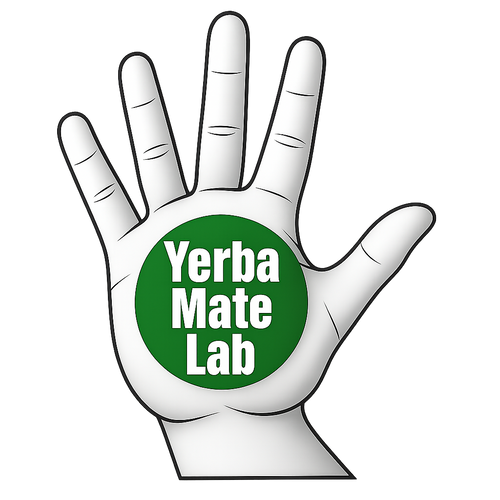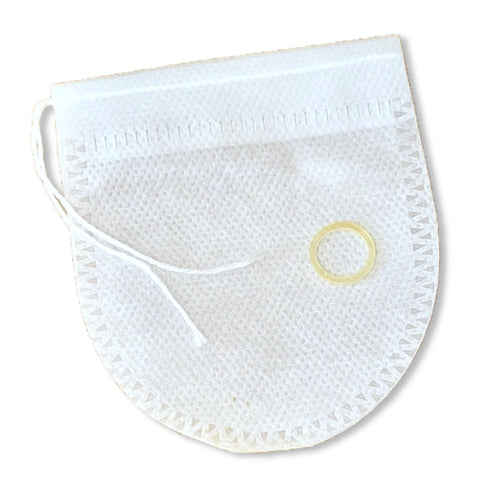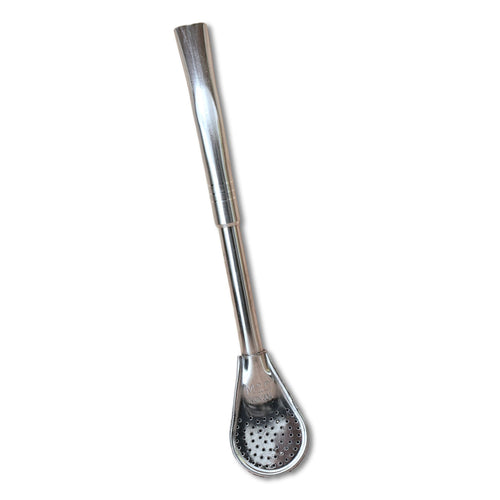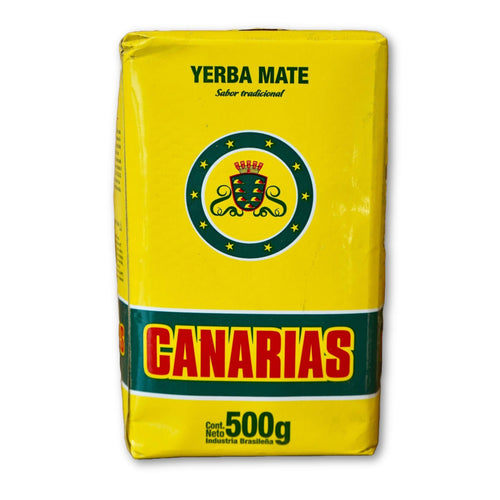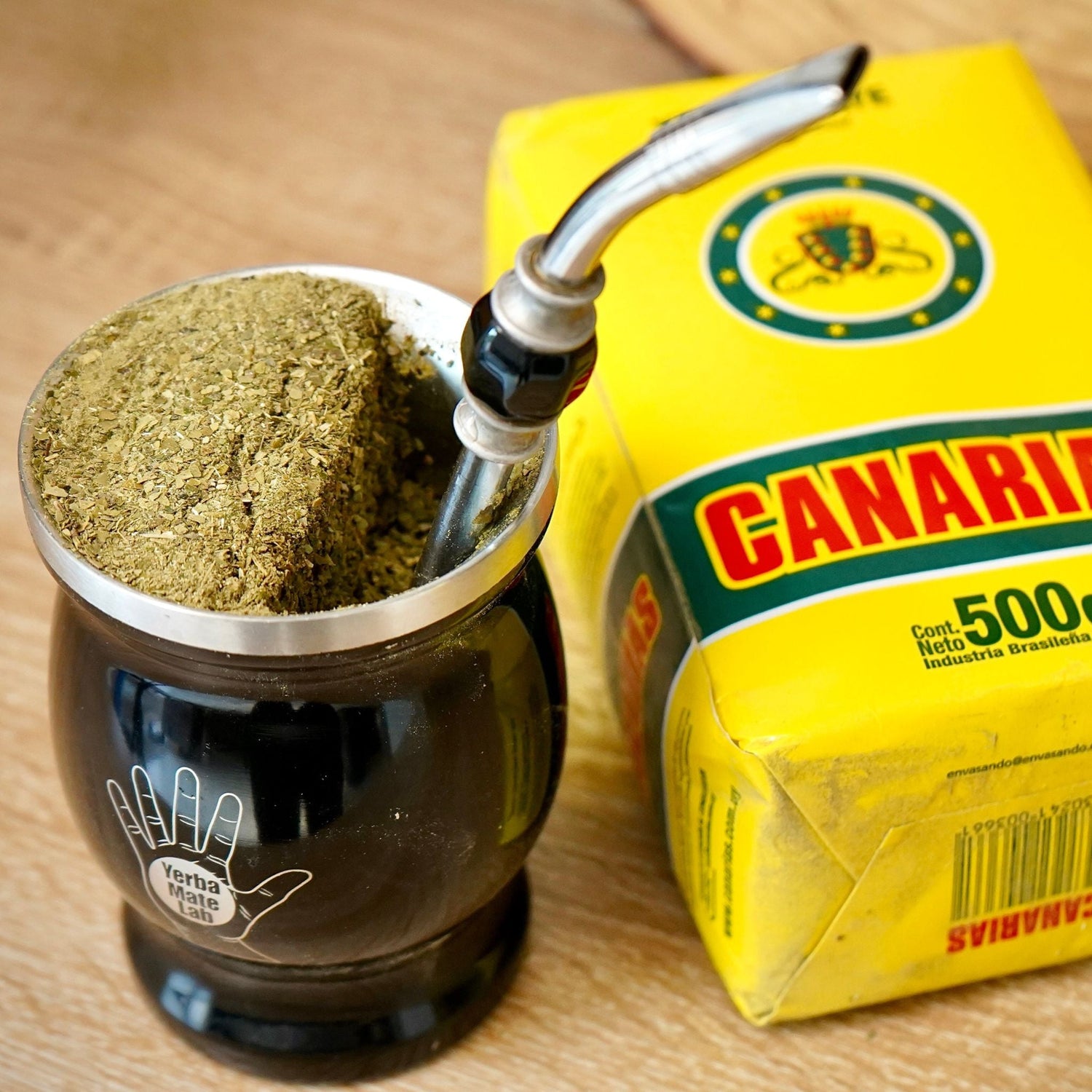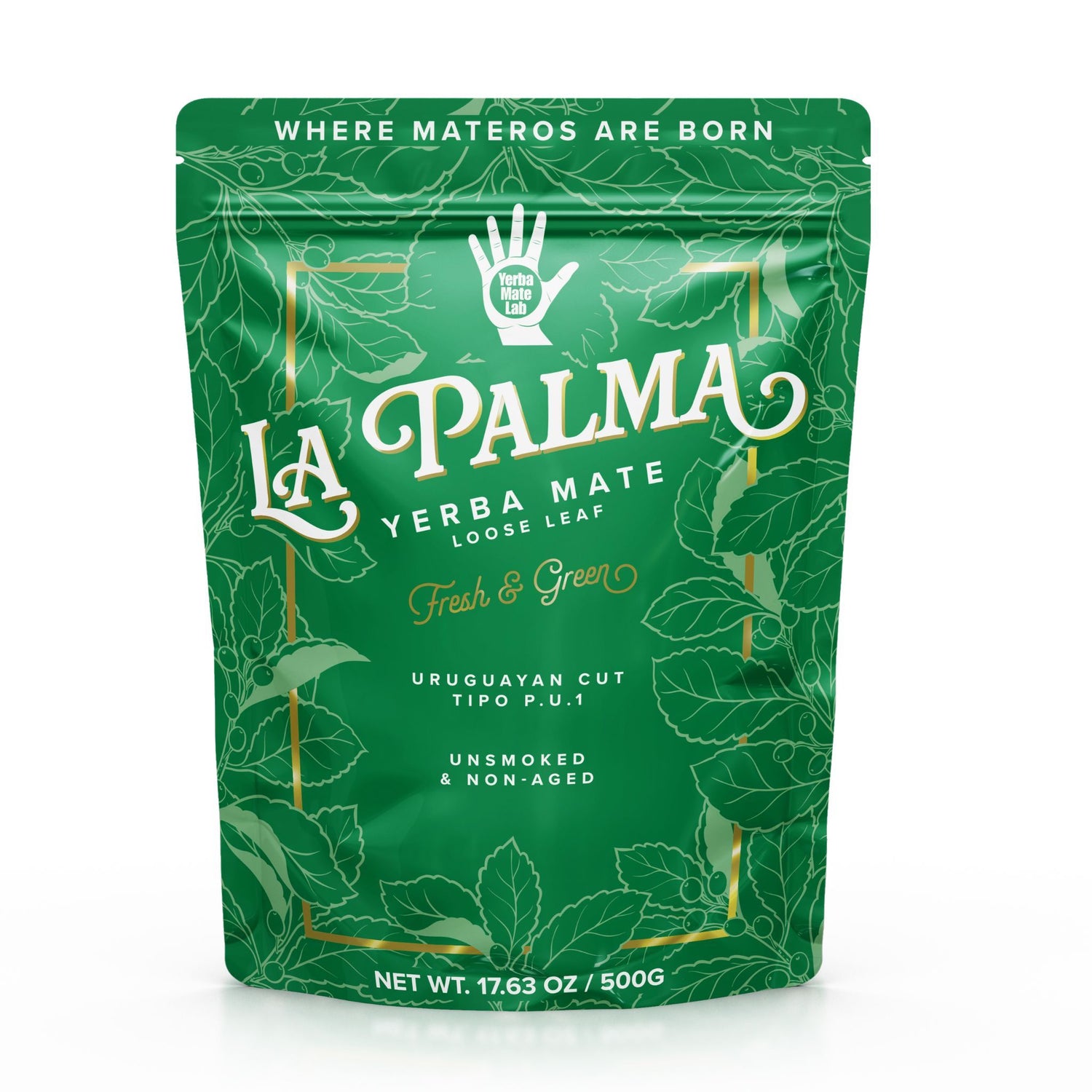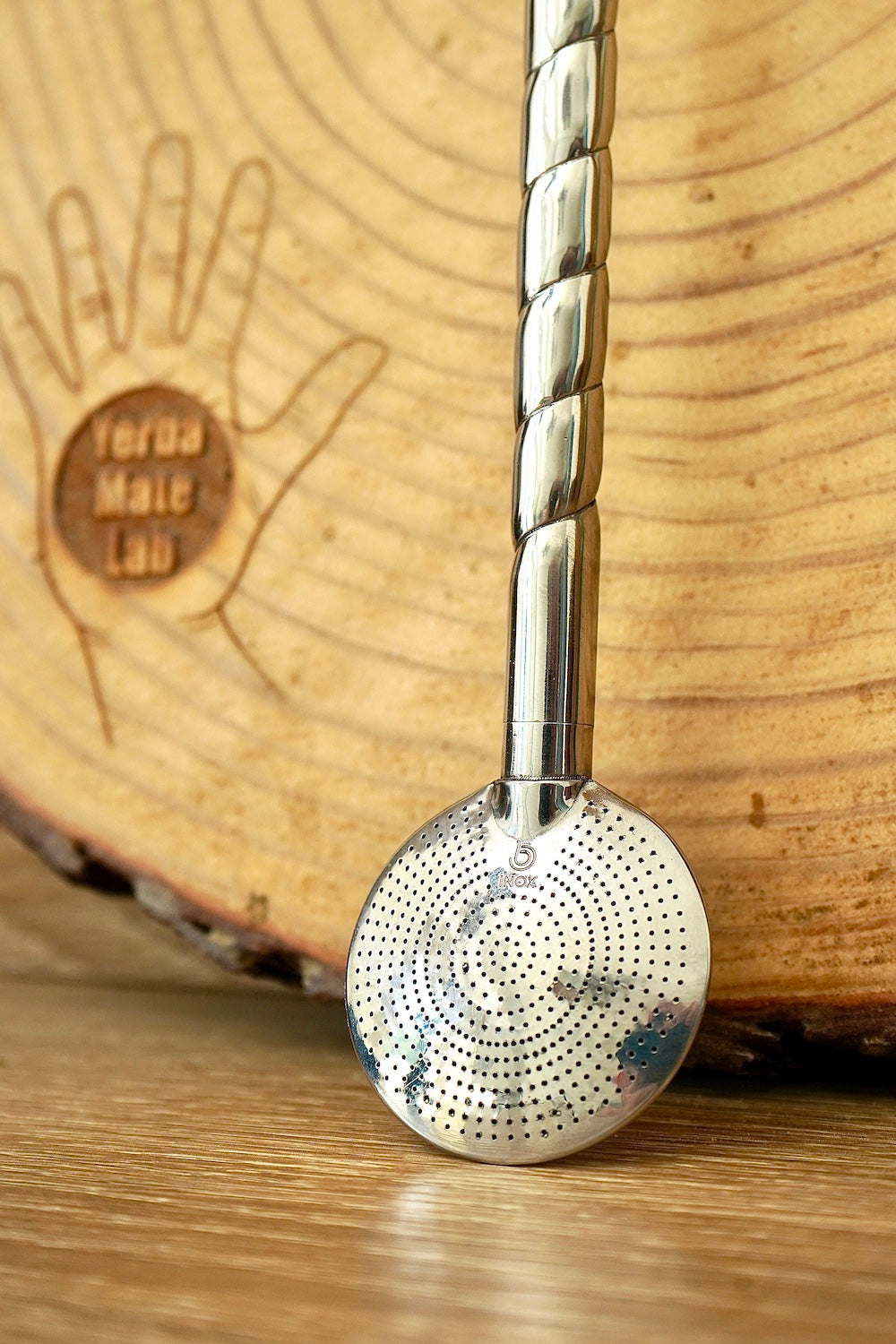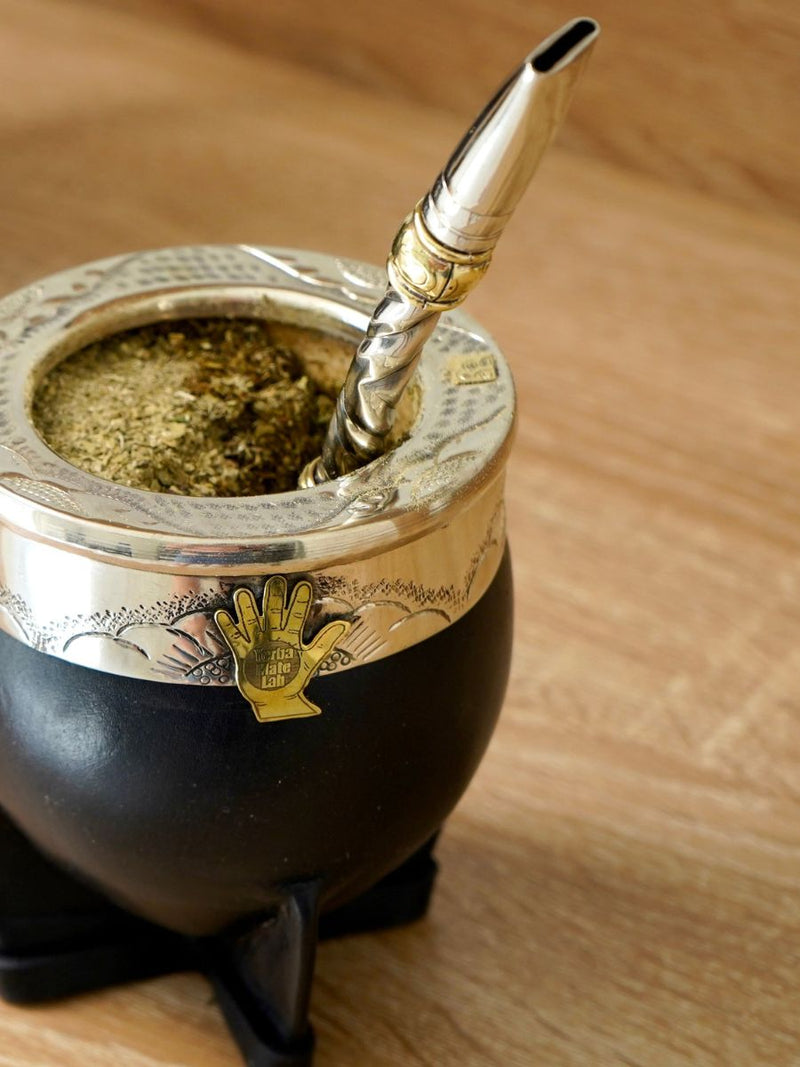Chimarrão (pronounced she-mah-hown) and yerba mate are like little brother and older brother.
Chimarrão is young, harmless, but hard to tame. While yerba mate has some years behind him, is a lot stronger, and easier to deal with.
Now before we dive any deeper, let’s start by clearing the air that chimarrão and yerba mate come from the exact same plant – ilex paraguariensis. It’s like what coffee grounds are to coffee beans. They’re the same but the difference is in how they’re made and processed.
Chimarrão (also known as erva mate) is more native to Brazil, whereas the yerba mate you typically see is more native to Argentina, Paraguay, and Uruguay.
Let’s first start by comparing the most obvious…
How Is Chimarrão And Yerba Mate Processed?
I’m not going to go into all the fine details here, but yerba mate starts off by the picking of leaves once they’ve reached a certain length.
From there, the plant goes through a process called sapecado where the leaves are quickly dried over a direct flame to prevent oxidation and to preserve its natural properties. Then, it gets dried again but under low heat and for several hours to remove the rest of the moisture. This is usually when smoke is introduced to the leaves. Next, the leaves are coarsely chopped (known as canchada) and aged for typically 1-2 years before finally getting milled into the final product that we all know and love.
 The top is canchada, below are the final products
The top is canchada, below are the final products
Now, what about chimarrão?
Chimarrão goes through the same process of harvesting the plant and drying it under direct and indirect flame, but typically without using any smoke. If it is smoked, it’s to a light degree.
The branches and stems are then sieved and separated from the leaves which are milled, pounded, and grounded until it turns into a fine powder – similar to matcha green tea. From there, instead of being aged, the yerba is packed immediately to keep it fresh, giving it a distinct neon green color.

As you can tell, chimarrão consists mostly of powder. This is what you’ll find in most easily accessible brands. However, chimarrão can come in a variety of cuts and different grinds. You can often find terms like moida grossa (coarse grind) and moida fina (fine grind) on some packages.
Now, because of this difference in cut between chimarrão and yerba mate, both require different methods of preparation.
But first, let’s go over what you need to drink them…
Things Needed To Drink Chimarrao VS Yerba Mate
Yerba mate is traditionally consumed using a calabash gourd and bombilla. Depending on the region, whether it be Argentina, Uruguay, or Paraguay, there will be some variation.
For example, Argentina traditionally uses simple calabash gourds, while Uruguay prefers torpedo gourds. But in Paraguay, they use a guampa (cow horn) or stainless steel gourds. The style of bombilla also differs greatly, but mostly comes down to personal preference.
Chimarrão, on the other hand, is traditionally consumed in a Brazilian cuia.
Cuias are also made of calabash but are created from the other half of the plant, giving these gourds their unique wide-brimmed, curvy silhouette. Cuias are generally larger in size to hold enough chimarrão for drinking.

When it comes to the straw or bomba as they call it, there’s only one option – and that’s a spoon-shaped bomba. These provide the best filtration for this powdery mate. Using any other straw will easily get clogged. Like cuias, bombas are also generally a lot larger and longer than others.
Now that you know what you need to drink yerba mate and chimarrão, let’s see how they’re prepared.
Preparing Chimarrao VS Yerba Mate
I’ve written a full post on how to prepare yerba mate and how to prepare chimarrao in the past, so I won’t go too deep into detail here.
Let’s begin with yerba mate…
- Fill your gourd 1/2 – 2/3 of the way with yerba
- Cover the opening with your palm and shake it upside down to move the larger particles to the bottom
- Tilt the gourd back to a 45º angle to position the yerba on one half, leaving the other half empty
- Pour room temperature water in the empty half and let it soak
- Slide your bombilla into the gourd from the empty half and position the filter under the mountain of mate
- Fill gourd with hot water (140-170ºF) and drink
The end result should look something like this:
For a better visual, watch our tutorial below!
Pretty simple right?
Preparing yerba mate isn’t too hard. As long as you have a quality bombilla, you have room for error.
Now for chimarrão, there are several ways to prepare it, but I’ll be showing you the two most common ways.
This first one is the easiest and has the highest success rate.
- Fill your cuia with hot water until it reaches the neck (the part where it concaves)
- Pour some chimarrão on top until you cover the entire surface and then some
- Use your bombilla and push the chimarrão to one side until you reach the water underneath
- Pour a little more water into the hole you just created
- Covering the opening of the bomba, place it in your cuia and drink
The end result should look something like this:

Now, the second way to prepare chimarrão is exactly the same way you’d prepare yerba mate. All the steps are the exact same.
Watch our video below to see how it’s done.
Preparing yerba mate is easy. But preparing chimarrão takes practice.
Chances are, you won’t get it correct the first time. Since the particles are so small, it’s almost inevitable that your bombilla will get clogged. And like many other mate drinkers out there, you’re going to end up wasting a good amount of mate before you finally get it down pat.
What Does Chimarrao Taste Like?
If you’re reading this, you’re probably already familiar with how yerba mate tastes.
The taste varies widely from brand to brand, but the constant is usually this earthy, smoky, woody, soil-like flavor.
Chimarrão, though?
It’s an entirely different experience.
Because it’s not typically smoked or aged, chimarrão produces a fresh grassy taste. Buttery smooth, mild, and creamy, its flavor profile is a lot more beginner-friendly compared to the smoky, bold flavors of yerba mate.
However, the tradeoff for not being aged is chimarrão lacks complexity in flavor. Brands of chimarrão don’t differ from one another as much as brands of yerba mate do.
Is Chimarrao Healthier Than Yerba Mate?
Because of the striking difference between the two mates, people tend to think one might be better than the other.
But it’s hard to say…
Remember, chimarrão and yerba mate come from the same plant so they share the exact same properties and phytonutrients. There’s no question about that. What makes answering this question unclear is whether the smoking and aging process of yerba mate negatively affects the plant’s nutrients. I’d assume it has some effect.
But if it does, by how much?
We don’t know yet.
PAH (polycyclic aromatic hydrocarbon) content in yerba mate has also been a large concern for many new drinkers. Yerba mate has been found to contain levels of PAH – a carcinogenic compound – because it’s smoked. Chimarrão is likely void of this since it’s not smoked, but it’s possible it still contains trace amounts from being dried over fire.
Whether this should concern you or not is up to you. I’ve posted my thoughts here.
So is chimarrão healthier than yerba mate?
Possibly because it’s less processed, but it’s still too early to know whether the difference is by any substantial amount.
Final Words
Chimarrão and yerba mate both serve their place in the world of mate.
Despite coming from the same plant, the methods used to process each one create a stark difference in appearance, taste, smell, preparation, and duration.
Grab a bag of yerba when you want something strong and bold. And grab a bag of chimarrão if you want something mild and smooth.
If you’re a beginner though, your best bet is to leave chimarrão on the side for now. Just trying to prepare chimarrão will put you off from the jump. Start slow and play it safe with a classic Argentinian mate, then start working your way up.
Then afterward, you can open yourself up to a new world of chimarrão once you get the preparation down.
P.S. If you enjoyed this post, check out our store for the best gourds and bombillas for yerba mate and chimarrão
